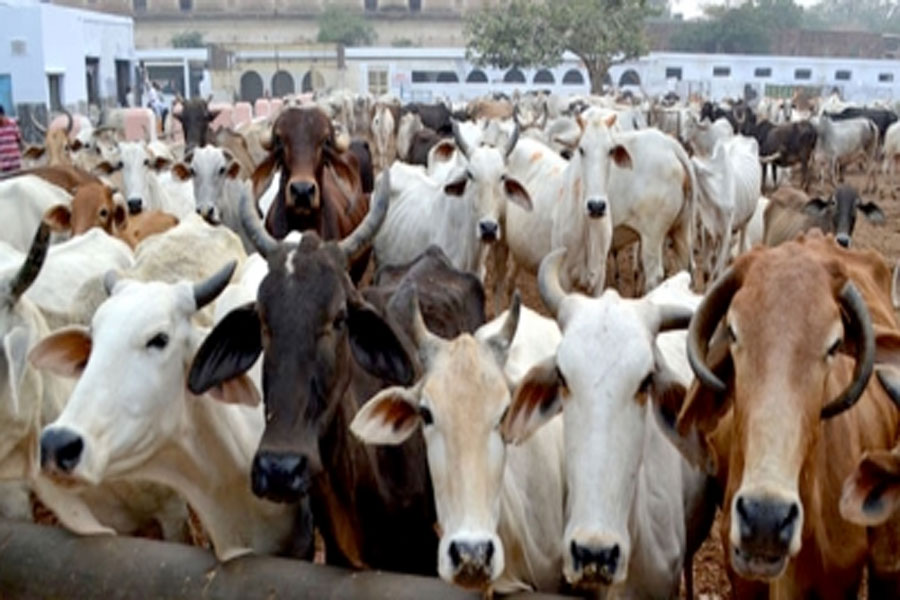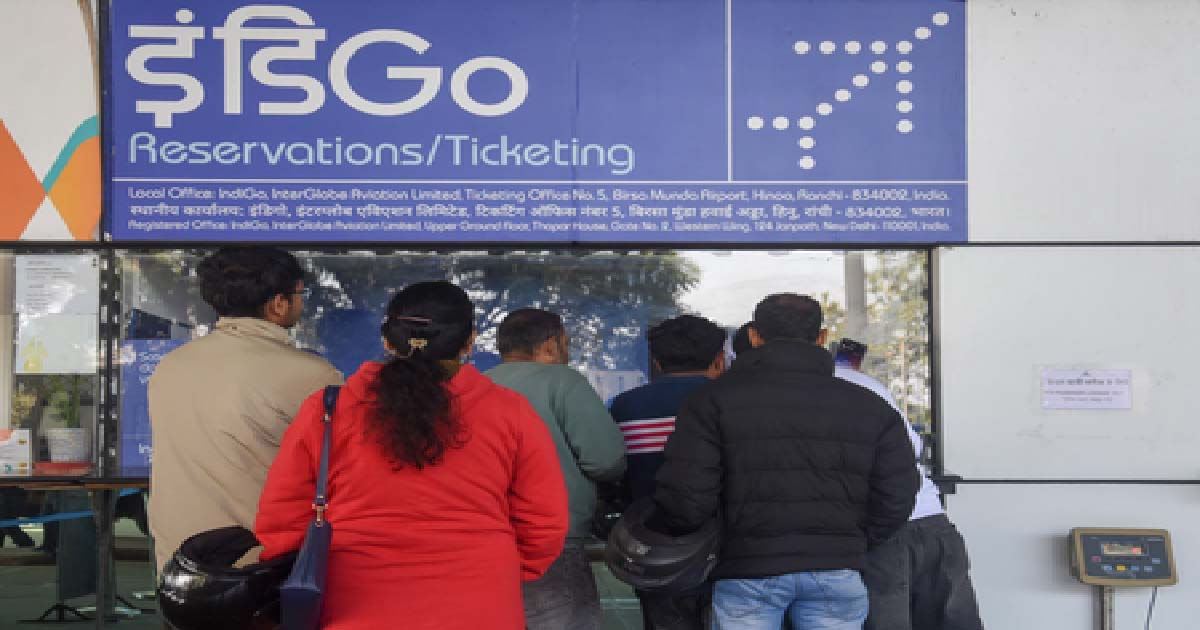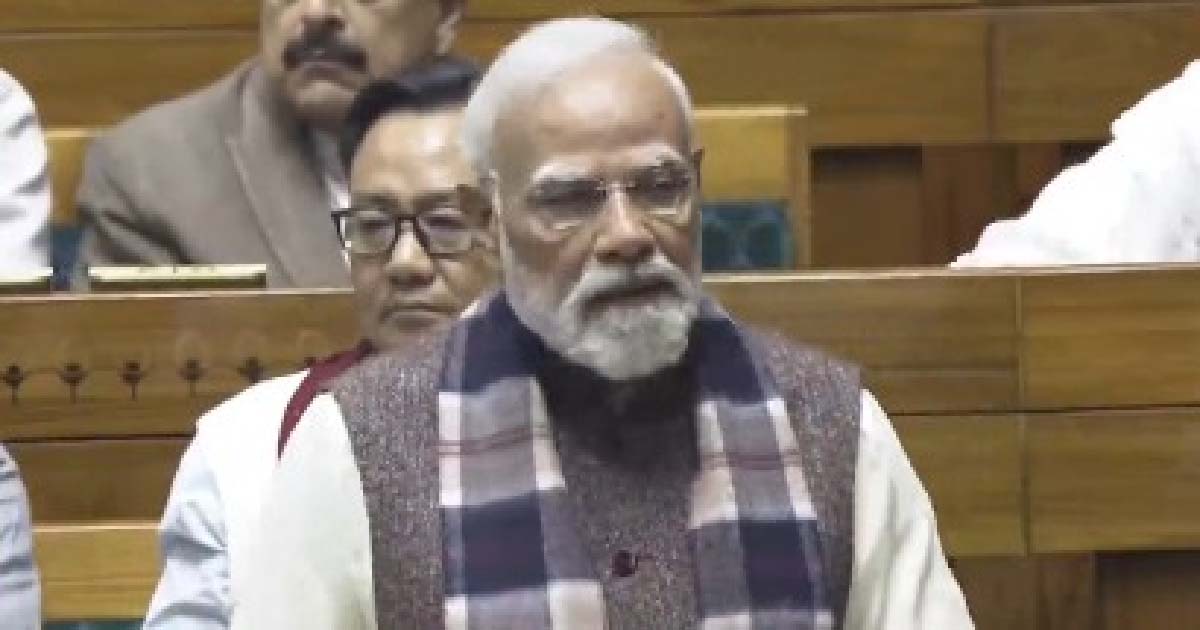National News
Raj govt on mission mode to check spreading lumpy skin disease among cattle

Rajasthan government has gone on an alert mode in view of the rising number of cattle stock falling prey to the lumpy skin disease and has directed the officers to work on a mission mode for the prevention of the disease.
As per officials, over 4,000 cows in the state have died due to the disease and thousands have been infected.
Animal Husbandry Minister Lalchand Kataria said that funds worth Rs 8-12 lakh have been disbursed at the division level offices in Ajmer, Bikaner and Jodhpur to buy emergency essential medicines. An amount of Rs 2 to 8 lakh has also been disbursed for other affected districts. In view of the emergency situation, the medicines available in the drug stores of other districts have been sent to the affected districts. Permission has been given to buy essential medicines under the brand name if the generic name is not available.
The minister said that the state medical teams and teams from neighbouring districts have been sent to the more affected districts. For the affected districts, 29 veterinary doctors and 93 livestock assistants have been deployed from other districts. Approval of 30 additional vehicles has been issued for effective monitoring and treatment of sick animals. Nodal officers sent from the directorate are visiting the affected areas and monitoring them continuously. More staff will be sent from other districts if required. A control room has been set up in the affected districts as well as at the Jaipur Headquarters for continuous monitoring of the disease spreading among livestock.
Giving instructions to control the lumpy skin disease completely in 15 days, secretary P.C. Kishan said that close monitoring is being done in Barmer, Jalore, Jaisalmer, Jodhpur and Sirohi districts due to high infection. He said that vigilance is also being done in other districts, including Dungarpur, Banswara, Udaipur, Rajsamand adjoining Gujarat. He said that teams from Indian Council of Agricultural Research, New Delhi and National Institute of High Security Animal Diseases, Bhopal have collected samples of sick animals from Jodhpur and Nagaur districts.
Kishan informed that the districts have been given full powers to deal with this disaster of disease outbreak. He instructed the officers to keep the sick animals separate from the healthy animals. Along with this, instructions were given to dispose of the dead animals through scientific methods.
“The outbreak of this disease is high in Jodhpur division, although the death rate is not high. One to 1.5 per cent of the animals that get sick are dying, which are very weak and have low immunity. Veterinarians are doing symptomatic treatment to prevent the disease. In order to protect healthy animals from the disease, animal owners have been advised to keep the infected animal completely separated, if symptoms like fever and lump, etc., are detected,” said the officials.
Kataria was reviewing measures being taken for the prevention of the disease with the officials of the affected districts through video conferencing at Pant Shi Bhawan here on Wednesday.
He directed the officers to immediately reach the spot on getting information about the infection and make the people aware of the preventive measures.
Chief Secretary Usha Sharma also had a meeting with ten district collectors and district level officers of the Animal Husbandry Department through video conferencing to review the status of lumpy skin disease spreading in the state and the efforts being made to prevent it. She informed that the state government was taking all the necessary steps with alertness and sensitivity regarding the spreading of lumpy skin disease in cattle in the state.
Business
IndiGo disruptions may cause revenue loss, penalties to company: Report

New Delhi, Dec 8: Widespread flight disruptions at IndiGo are credit negative, and refunds and compensation could cause it “significant financial damage”, credit rating agency Moody’s warned on Monday.
In a note, Moody’s said that regulatory penalties from the Directorate General of Civil Aviation (DGCA) remain possible as the airline failed to plan for aviation rules communicated over a year earlier.
The crisis struck as the airlines entered their peak winter schedule, with “significant lapses in planning, oversight and resource management” as the Phase 2 of the Flight Duty Time Limitation (FDTL) rules were introduced on November 1, 2025, after being communicated more than a year earlier, it noted.
The rules reclassified midnight–6 a.m. duties as night duty and cut permissible landings in 24 hours from six to two or three. The agency said that IndiGo’s lean operating model lacked resilience to integrate the change, forcing a system‑wide schedule reset.
Over 1,600 flights were cancelled on December 5, and over 1,200 were grounded in November, with cancellations beginning on December 2. Moody’s said IndiGo is yet to fully restore normal operations.
IndiGo said it was set to operate over 1,800 flights on Monday, up from 1,650 on Sunday, adding that more than 4,500 bags have been delivered to respective customers, and “we are on track to deliver the rest in the next 36 hours”.
The airline said it expects a return to full schedules by mid-December, adding that it is working “round the clock” to normalise operations.
It has so far refunded Rs 827 crore to affected passengers, and the rest is under process for cancellations up to December 15.
Union Civil Aviation Minister K. Rammohan Naidu said in the Parliament on Monday that the government has initiated a thorough inquiry into the matter.
“IndiGo was supposed to manage the crew and roster…We will take strict action. We will set an example for every airline. If there is any non-compliance, we will take action,” he said on the floor of the Rajya Sabha.
Crime
Palghar Crime: 40-Year-Old Constable Arrested For Allegedly Raping Woman Inside Kasa Police Station

Palghar, Maharashtra, Dec 08: A 40-year-old police constable has been arrested for allegedly raping a woman inside the Kasa police station in Maharashtra’s Palghar district, officials said on Monday.
According to a senior official from the Palghar rural police, the incident took place last week when the woman had visited the station to record her statement in connection with an ongoing case. The constable allegedly assaulted her within the premises.
Following a complaint filed by the woman, a case of rape was registered and the constable was arrested on Sunday, officials confirmed.
In the aftermath of the incident, the in-charge of the Kasa police station has been transferred. Further investigation is underway.
National News
PM Modi recalls how Vande Mataram defied British oppression, stood ‘like a rock’

New Delhi, Dec 8: Prime Minister Narendra Modi, on Monday, invoked the enduring spirit of ‘Vande Mataram’ while initiating a day-long discussion in the Lok Sabha to mark the 150 years of the national song.
He described it as a hymn that stood “like a rock” against British oppression and continued to inspire unity across generations.
Tracing the song’s journey from its composition by Bankim Chandra Chattopadhyay in 1875 to its role in the freedom struggle, PM Modi said ‘Vande Mataram’ became a current of emotion that bound the nation together.
“Even when crises like the coronavirus pandemic struck, the spirit of ‘Vande Mataram’ continued to connect the country. Today, as we march towards an ‘Atmanirbhar Bharat’ (Developed India), this hymn remains a source of strength,” he noted.
The Prime Minister quoted Mahatma Gandhi, who had described ‘Vande Mataram’ as a song that united the nation.
“Pujya Bapu (Mahatma Gandhi) said ‘Vande Mataram’ connects us. It is the dream of today’s generation to build a prosperous India, and this song continues to inspire that vision,” PM Modi said.
He emphasised that the hymn was more than just words — it was a mantra of sacrifice, resilience, and unity.
From the days of colonial bans, when people were punished for speaking or printing the words, to the sacrifices of countless freedom fighters who embraced martyrdom with ‘Vande Mataram’ on their lips, the song has remained a symbol of defiance and hope.
PM Modi urged the Parliament to ensure that the legacy of ‘Vande Mataram’ is preserved and passed on to future generations.
“This is not just a tribute to history but a reaffirmation of our democratic spirit. The lessons of the past must continue to guide our future,” he said, adding that the 150th anniversary was an opportunity to restore pride in a hymn that has been the heartbeat of Bharat.
Initiating a day-long discussion on 150 years of ‘Vande Mataram’ in the Lok Sabha, PM Modi noted that ‘Vande Mataram’ stood like a rock and inspired unity despite British oppression.
“When ‘Vande Mataram’ completed 100 years, the nation was chained by the Emergency. At that time, the Constitution was throttled and those who lived and died for patriotism were pushed behind bars,” he said.
“The Emergency was a dark chapter in our history. Now we have the opportunity to restore the greatness of ‘Vande Mataram’. And I believe this opportunity should not be allowed to pass,” PM Modi added.
-

 Crime3 years ago
Crime3 years agoClass 10 student jumps to death in Jaipur
-

 Maharashtra1 year ago
Maharashtra1 year agoMumbai Local Train Update: Central Railway’s New Timetable Comes Into Effect; Check Full List Of Revised Timings & Stations
-

 Maharashtra1 year ago
Maharashtra1 year agoMumbai To Go Toll-Free Tonight! Maharashtra Govt Announces Complete Toll Waiver For Light Motor Vehicles At All 5 Entry Points Of City
-

 Maharashtra1 year ago
Maharashtra1 year agoFalse photo of Imtiaz Jaleel’s rally, exposing the fooling conspiracy
-

 National News1 year ago
National News1 year agoMinistry of Railways rolls out Special Drive 4.0 with focus on digitisation, cleanliness, inclusiveness and grievance redressal
-

 Maharashtra1 year ago
Maharashtra1 year agoMaharashtra Elections 2024: Mumbai Metro & BEST Services Extended Till Midnight On Voting Day
-

 National News1 year ago
National News1 year agoJ&K: 4 Jawans Killed, 28 Injured After Bus Carrying BSF Personnel For Poll Duty Falls Into Gorge In Budgam; Terrifying Visuals Surface
-

 Crime1 year ago
Crime1 year agoBaba Siddique Murder: Mumbai Police Unable To Get Lawrence Bishnoi Custody Due To Home Ministry Order, Says Report














